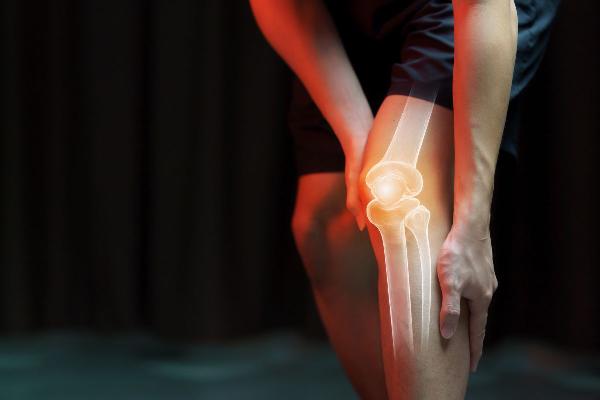Navicular Bone Pain: Understanding Causes, Symptoms, and Treatment Options

Strong 8k brings an ultra-HD IPTV experience to your living room and your pocket.
Navicular bone pain can be a significant concern for many individuals, particularly athletes and active individuals. The navicular bone, located in the midfoot, plays a crucial role in the structure and function of the foot. This article will delve into the causes, symptoms, and treatment options for navicular bone pain, providing a comprehensive overview for those affected.
What is the Navicular Bone?
The navicular bone is one of the seven tarsal bones in the foot. It is situated on the medial side of the midfoot, forming part of the arch and providing stability to the foot. The navicular bone is essential for the proper alignment and movement of the foot, making it a critical component for overall foot health.
Causes of Navicular Bone Pain
Navicular Bone Pain: Causes, Symptoms, and Treatment Options | The Lifesciences Magazine
Navicular Stress Fracture: One of the most common causes of this bone pain is a stress fracture. This condition often results from repetitive stress or overuse, particularly in athletes involved in high-impact sports. The stress fracture can cause localized pain and swelling in the navicular region.
Navicular Bone Contusion: Trauma or direct impact to the foot can lead to a contusion of the navicular bone. This injury can result in bruising and pain, particularly when pressure is applied to the affected area.
Accessory Navicular Syndrome: Some individuals have an extra bone, known as an accessory navicular, which can cause pain and discomfort if it becomes inflamed or irritated. This condition often presents with pain on the inner side of the foot.
Posterior Tibial Tendon Dysfunction (PTTD): The posterior tibial tendon helps support the arch of the foot and attaches to the navicular bone. Dysfunction or inflammation of this tendon can lead to pain in the navicular area.
Arthritis: Osteoarthritis or rheumatoid arthritis affecting the midfoot can result in navicular bone pain. Inflammation and joint degeneration can cause significant discomfort in the area surrounding the navicular bone.
Flat Feet: Individuals with flat feet or overpronation may experience excessive strain on the navicular bone, leading to pain and discomfort. The abnormal foot alignment can put extra pressure on the navicular region.
Symptoms of Navicular Bone Pain
This pain can present with a variety of symptoms, including:
Localized Pain: Pain is often concentrated around the navicular bone, particularly during weight-bearing activities.
Swelling: Inflammation around the navicular area can cause visible swelling.
Tenderness: The affected area may be tender to the touch, and pressure on the navicular bone can exacerbate the pain.
Reduced Range of Motion: Pain and swelling may limit the foot’s range of motion, making it difficult to move or flex the foot.
Bruising: In cases of contusion or trauma, bruising may be present around the navicular bone.
Diagnosis of Navicular Bone Pain
Navicular Bone Pain: Causes, Symptoms, and Treatment Options | The Lifesciences Magazine
Accurate diagnosis of this pain involves a combination of clinical evaluation and imaging studies:
Medical History and Physical Examination: A thorough medical history and physical examination are essential for identifying potential causes of navicular bone pain. The healthcare provider will assess the patient’s symptoms, activity level, and any recent trauma or overuse.
Imaging Studies: X-rays, MRI, or CT scans may be used to visualize the navicular bone and surrounding structures. These imaging techniques help identify stress fractures, contusions, arthritis, or other abnormalities affecting the navicular area.
Diagnostic Injections: In some cases, diagnostic injections may be used to determine if the navicular bone is the source of pain. An anesthetic injection into the navicular region can provide temporary relief, confirming the diagnosis.
Treatment Options for Navicular Bone Pain
Effective treatment for navicular bone pain depends on the underlying cause. Common treatment options include:
Rest and Activity Modification: Resting the affected foot and avoiding activities that exacerbate the pain is crucial for healing. Modifying activity levels can help prevent further stress on the navicular bone.
Ice and Compression: Applying ice to the affected area and using compression can help reduce swelling and alleviate pain. Ice packs should be applied for 15-20 minutes at a time, several times a day.
Elevation: Elevating the foot can help reduce swelling and improve blood flow to the affected area.
Pain Relief Medication: Nonsteroidal anti-inflammatory drugs (NSAIDs) can provide relief from pain and inflammation. Over-the-counter options like ibuprofen or naproxen may be recommended by a healthcare provider.
Footwear Modifications: Wearing supportive and properly fitting footwear can help reduce strain on the navicular bone. Custom orthotics or shoe inserts may also be beneficial in providing additional support and cushioning.
Physical Therapy: Physical therapy can help strengthen the muscles around the foot and improve flexibility. Specific exercises and stretches may be prescribed to address issues related to navicular bone pain.
Casting or Bracing: In cases of severe stress fractures or other injuries, a cast or brace may be necessary to immobilize the foot and promote healing.
Surgical Intervention: For persistent or severe cases of navicular bone pain, surgical intervention may be required. Procedures may include repairing fractures, removing accessory bones, or addressing tendon issues.
Preventing Navicular Bone Pain
Navicular Bone Pain: Causes, Symptoms, and Treatment Options | The Lifesciences Magazine
Preventive measures can help reduce the risk of developing navicular bone pain:
Gradual Increase in Activity: Gradually increasing the intensity and duration of physical activities can help prevent overuse injuries and stress fractures.
Proper Footwear: Wearing well-fitting, supportive footwear that provides adequate cushioning can help reduce strain on the navicular bone.
Foot Strengthening Exercises: Strengthening the muscles and tendons around the foot can improve stability and reduce the risk of injuries.
Regular Foot Inspections: Regularly inspecting the feet for signs of injury or abnormal changes can help identify potential issues early and seek appropriate treatment.
Balanced Training Regimen: Incorporating rest days and cross-training activities can help prevent overuse injuries and maintain overall foot health.
Conclusion
Navicular bone pain can significantly impact an individual’s quality of life, particularly for those involved in physical activities. Understanding the causes, symptoms, and treatment options for navicular bone pain is essential for effective management and recovery. By addressing underlying issues and implementing preventive measures, individuals can minimize the risk of navicular bone pain and maintain optimal foot health.
Whether dealing with a stress fracture, contusion, or other causes of navicular bone pain, seeking professional medical advice and adhering to recommended treatment plans can help achieve a full recovery and return to normal activities.
Note: IndiBlogHub features both user-submitted and editorial content. We do not verify third-party contributions. Read our Disclaimer and Privacy Policyfor details.


